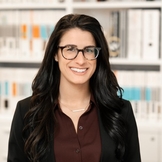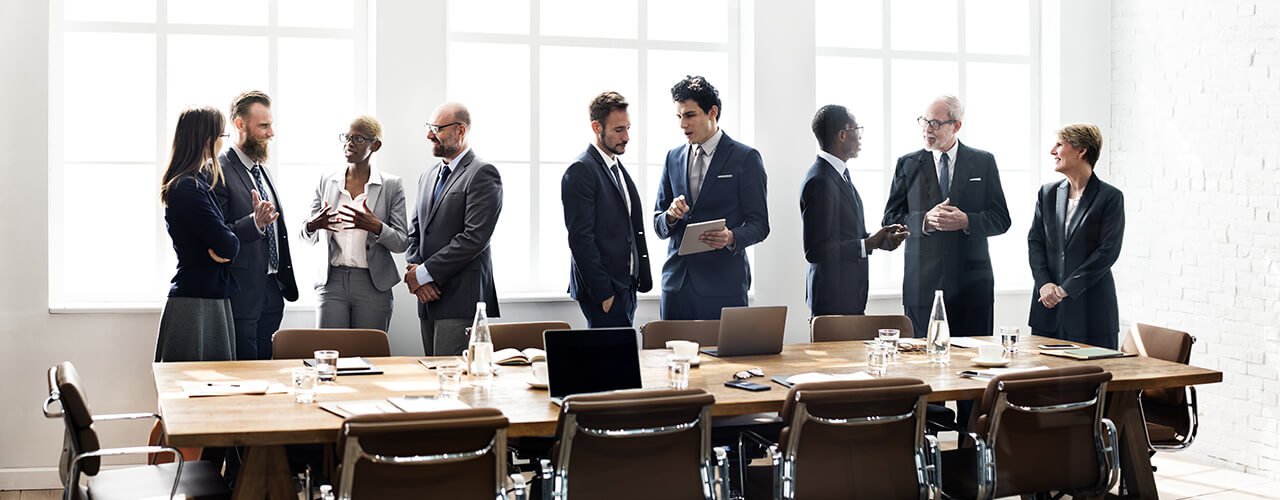As 2019 draws to a close, we take a look at some of the most popular commercial interior design trends and have an in-depth discussion with several interior design experts.
Every year, innovations in architecture shift the focus of interior design, morphing it by focusing on the experience of the space, rather than the need it fulfills. Offices are no longer a place where people can do their job, but one that they enjoy spending time in and that helps them be productive and creative.
Sustainability and environmental awareness have set the tone in 2020, and likely beyond. Companies are shifting their preferences accordingly by implementing more eco-friendly policies, green spaces, and innovative materials into their workspaces. These innovations also help to address employee health and wellbeing, which is an increasingly important goal for companies going forward.
Most of all, interior design is distancing itself from the cold and clinical feel of classic office spaces; instead, designers strive to make office spaces welcoming and homely, turning the design of office spaces towards comfort.

Kellie Sirna
Principal and Co-Founder of Studio 11 DesignAs Principal and Co-Founder of Studio 11 Design, Kellie Sirna’s entrepreneurial acumen and creative perspective has been honed throughout two decades of traveling the world and designing some of the hospitality industry’s most inspiring spaces. Since starting the firm with Co-Founder Stacy Elliston in 2011, Kellie has led global projects across boutique and renown nameplates such as Caesars Entertainment, Hyatt, Starwood, Thompson Hotels and many more.

Jenifer Halverson
Studio Director at Pacific Office InteriorsServing as the Studio Director at POI, Jenifer Halverson plays a major role in the onboarding and training of specification designers; quality control; and general project support. Through her commitment to this role, she has helped POI improve the quality of project deliverables as well as remain a resource for the rooted knowledge of both product and client projects.

Mark Hirons
Design Principal at CannonDesignMark Hirons is one of the leading international interior architects/designers with a focus on corporate environments. He contributes a powerful ability to listen, ask poignant questions, and gain an empathetic understanding to thoughtfully translate each client’s needs into unique spaces that ultimately are meaningful and memorable.

Amanda Corso
Design Strategist at Infinity GroupAmanda Corso is a native of West Haven, CT. In 2015, she graduated from University of New Haven with a Bachelor’s degree in Interior Design. With her skills in space-planning and architectural rendering, she excels in tailoring her design concepts to the functional needs of Infinity Group’s clients.
What’s your personal approach to commercial interior design?
Kellie Sirna
“As Studio 11 Design is a hospitality design firm, creating welcoming, engaging, and inspiring spaces for many different guests with many different needs is at the heart of what we do. To develop a strong design narrative, it’s key to have an understanding of who will be interacting with your space, their needs, and the experience you want them to have. I’m a big believer in the power of the process and this is why we launched Brand Society, our firm’s brand identity development component. As you’re expanding on the foundation of your narrative, it’s important to approach the sourcing and styling process with a keen eye for the details that make the space come alive. It’s at this point in the process that we call upon the talents of our styling, staging, graphic design, and art team: Lou Verne by Studio 11 Design.”
Jenifer Halverson
“It begins with active listening. We find that by getting curious, we reveal our client’s known and unrealized needs. This dialog helps identify and prioritize the relevant services required to provide our clients with truly transformational solutions.”
Mark Hirons
“I see each project as an opportunity and responsibility to thoughtfully orchestrate the client’s aspirations and functional goals. Designing the most effective place for an organization to thrive and succeed ultimately has three aspects that often drive the process:
- Learn – Research and glean a deep understanding of the client, priorities, and parameters. Use meaningful data to understand current behaviors to inform the design and where hidden/ stretch opportunities may lie.
- Listen – Understand the client’s vision and their aspirations to ultimately have the space tell their story – what makes a firm unique and attracts talent to come and stay.
- Create – Translate ideas into placemaking; creating unique settings that enrich the daily lives of those the space impacts.”
Amanda Corso
“My personal approach to commercial interior design is to always seek to understand and be empathetic and fully present while listening intently. People have ideas and want to be heard. Working together with them to hear their side and being a liaison of workplace strategy and design to get the best space fit to them is what helps everyone.
Wellness and sustainability are also very important in any workplace design. A lot of what I do is ensuring each employee and the company are meeting these needs to have the best solution for their space. It’s important to like the space you’re in, but it’s equally important to thrive and be healthy in it too. People spend so much time at work, it’s important they feel good about where they spend that time.”
What are some of 2019’s commercial interior design trends that you would like to see more of in 2020?
Kellie Sirna
“Unequivocally, I think our whole team would agree that seeing more art in the workplace would be very exciting in 2020. Art has the unmatched potential to create a strong sense of locality. Showcasing local artists can be a great way for companies to connect with their local clients, drive awareness for the emerging talent in the destination they’re located within and foster a sense of connection for employees. Great art shouldn’t be something you have to go to a museum to find. We’d love to see it become a part of everyday life.”
Jenifer Halverson
“Bringing it outdoors! Creative as well as experiential approaches to working and living more outside a building. Softer and more inviting designs of contract grade furniture, that encourage relaxation, restoration, and functionality within the workplace.”
Amanda Corso
“I would like to see more choice-based seating and workspace flexibility, Resimercial design styles, and more emphasis on workplace wellness and mindfulness. We want to create a balance of comfortability and function – All the trends I mentioned are key players in this idea. It’s important to be able to work where you want to be based on what you need to get done and having a space that is comfortable and natural to be in.
- Resimercial design is rising, and I see it continuing to do so. It catches the user right in the emotional gut – “Damn I wish I was home.” Spending time at the same place 5 days a week for 8+ hours can be taxing if the environment isn’t right. It’s critical that these spaces give back to us the things that it’s inevitably taking away. It’s imperative that it supports qualities that we wish for in the comfort of our home with the balance of a professional work environment. It can also improve employee retention, as well as attract new talent and stimulate productivity. The more employers invest in their people, the more employees want to give back and benefit the company.
- Workplace culture is so much bigger than swapping out carpet and paint, it’s centering every design choice and option around the health and well-being of another. All this ties directly into workplace wellness, creating a space that directly improves wellness through functional design that will help everyone from the individual employee, to the company culture and business initiatives.
- With Gen Z coming up in the charts they are demanding even more from their workplaces – faster technology, more benefits, and a better work/life balance. Flexibility is crucial not only in schedules but also in workspaces.”
What office interior design trends do you think are going to be successful in 2020?
Kellie Sirna
“One office design trend I predict success for in 2020 is a focus on integrating sustainable design touches into the workplace. By incorporating sustainable fabrics and repurposing or upcycling furniture, companies can really embrace an ethos of environmental consciousness. Creating more sustainable workspaces is one-way companies can drive awareness for the issue.”
Jenifer Halverson
“The impact of the open environment is wide-reaching, but too many people’s needs are being missed with the status quo approach. We need to rethink how we incorporate privacy elements into our design, creatively integrating visual and acoustic solutions, for the sake of focus and productivity. Over the last decade, the industry has been busy deconstructing the office environment and it hasn’t necessarily served everyone.”
Mark Hirons
“As attention and importance elevate toward how work environments can positively affect people and their business, the following will strongly influence design in the coming year:
- Authentic brand immersion– leveraging the context of a setting along with well-crafted messaging to make memorable experiences for guests and staff alike are increasingly vital.
- Well-being – offering a more complete focus on all aspects of wellness within the workplace; encouraging a healthy life for all is critical to ensuring everyone is at their best. Some of the facets of this will likely be:
- Acoustics (intellectual wellness)- provide enjoyable focus spaces that limit distractions and foster deeper individual thought that balance the highly visible collaborative settings
- Connectivity (social wellness) – foster a sense of community within organizations at different scales to support a range of socialization and relationship building. For example, provide the small one-on-one booth settings all the way to the town hall environments to allow the settings to best match the type of interaction desired.
- Movement (physical wellness) – promote destination settings and support more movement between spaces via engaging paths and stairways; supplement with settings and ergonomics that offer various postures throughout the day.
- Connection to nature (environmental wellbeing)- from infusing daylight, framing views, integrating concepts rooted in biophilia, layering and patterning, etc., all enrich the quality of the experience.
- Choice –providing a broad spectrum of spaces that are tailored for personal productivity and an organization’s culture, offering the diversity of settings to ensure all are optimized in how they can best contribute to an organization”
Amanda Corso
“I believe a balance of the wellnesses (personal, professional and workplace) are always going to be at the heart of every trend. The following are the ones on the rise in 2020:
- Acoustics are and will continue to be a successful trend. Each office design needs to account for the factors and levels of noise that need to be addressed to make it a functional space. The application of acoustics, as well as the understanding of how they work and how they should be applied, are important in any design. As soon as someone wants an open office with exposed ceilings and concrete floors that’s the designer’s green light to start brainstorming on how to solve for the biggest design problem of the year – less noise and distraction.
- Mindfulness in the workplace – etiquette and teaching the appropriate behaviors based on the style of the office.
- Being by natural light and designing with the appropriate styles and needs for indoor lighting are both equally important. Biodynamic lighting creates a balance of both, regardless of where you are sitting in the space. It can mirror natural sunlight conditions while also regulating your circadian rhythm and provide a healthier workspace.
- “Neighborhoods” – Co-working spaces that create community and purpose as well as inspire teams to work together.”
What office interior design trends can you expect to see declining in 2020?
Kellie Sirna
“Sticking to the status quo of neutral colors in the workplace may be on the decline. While there is always a time and a place for the calming effect of neutral colors, we’re excited to see more companies experiment. Unexpected design pairings you might see more of could be textured walls with a bold or dark color palette offset by light floors or bright patterned rugs.”
Jenifer Halverson
“I believe we’ll see increasingly complex employee arrangements. More companies are prioritizing their employee’s wellness, recognizing that work/life balance is critical to the long-term success of their team. To support this, they’re strategically rethinking their business philosophy, which impacts why and how they approach their space. Frequently these decisions value choice, personalization and adaptability.”
Amanda Corso
“Open offices can be successful but require the right balance in both culture, etiquette and design to work properly. This trend has the possibility to increase or decline, it’s more dependent on the type of company trying to implement it.
Workplaces are finding that it’s not actually conducive to the types of focused work and productivity that companies are trying to generate out of their employees. Certain types of businesses will not work as well with this idea, while others may thrive. It isn’t a type of design that will work for everyone. The companies that do implement it will have a learning curve with it initially and then it will either work for them or it won’t. I can see it declining because people may not be as open to the idea and businesses may not see it as productive because they aren’t implementing it in the way their employees need them to. Used correctly and with the right balances, it can really benefit everyone using the space.
What do you think about ready-to-go offices, also known as “vanilla boxes”?
Kellie Sirna
“As a business owner, I can understand the need for ready-to-go offices. As a designer, I think they can offer tremendous possibility. In these modern times, work can so strongly inform your identity. Ready-to-go offices satisfy the important, sometimes urgent need for a functional workspace, but the challenge lies in bringing them alive for the very people they were created for.”
Jenifer Halverson
“I find it exciting. Having a timeless design that is highly adaptable is the true foundation of a great sustainable story. Modularity supports easy reconfiguration and change. Look at the success of workstations, modular walls and raised floors. There’s a compelling sustainability element to this approach as well!”
Amanda Corso
“ Vanilla boxes are like a clean slate and a fresh start. It all depends on how you utilize the space and the purpose of what you are trying to accomplish with it. Thoughtful design goes a long way when approaching these types of projects.””
Do you consider that thinking about the future when designing an office space is helpful?
Kellie Sirna
“Absolutely! When destining any space, longevity should be a key concern. How will people engage with your space now, next month, in 20 years? As a firm, we love to think about how our projects can be long-lasting and endure the test of time. The dichotomy between the design elements that satisfy the “here and now” needs of your office space guest and that guest in a few years can be very challenging to navigate. Technology is ever evolving so it’s important to create leeway in your design concept for spaces that can adapt. Ultimately, this foresight can also save budgets in the long-run.”
Jenifer Halverson
“Absolutely, I feel great design isn’t possible without considering the future state. Since the way we work will continue to rapidly change, we must design with that in mind.”
Mark Hirons
““Future-proofing” the space in giving thoughtful flexibility for the future unknown is essential in providing a valuable design solution for any organization. Balancing the duration of a lease, systemic corporate change, technology advances, etc., all directly impact how successful a space serves a company into the future and need to be considered.“
Amanda Corso
“Absolutely – it’s the only way we are going, right?! With every project, it’s important to embrace all three sides of the spectrum – the past where the company has come from, the present where they are at right now and the future, where they want to be.
We are in a technology age; a vastly expanding and forward-thinking age and it is imperative that we think of what that means. Research speculates that one day we could all be wearing VR goggles and having meetings with people in Virtual rooms.”
With experiential design on the rise, can you give us some examples of how it can be incorporated into different projects?
Kellie Sirna
“As hospitality designers, the powerful impact of experiential design is tremendous. The first step in the process is to nail your understanding of who will be using the space and what the client wants them to take home from their experience of it. In every hotel, restaurant, bar, public space we create, we’re challenged to find the intersection of functional, welcoming, and engaging design solutions to suit different needs. There are endless experiences you can create and a diversity of approaches you can invoke from your designer toolbox to achieve the experiential design.
Some quick tips from my personal arsenal include playful seating options for that “you can’t help but sit down” effect and neon signage with custom phrases that can quite literally guide one’s understanding of the space.”
Jenifer Halverson
“I love the idea of invoking emotional responses through design elements. One place we’re focusing our experiential efforts surrounds helping our customers bring their brands to life within their space. We incorporate values, messaging and the company’s legacy throughout the workplace. We’ve used artwork, films, graphics, signage, color, pattern and materials to infuse their space with artifacts of their culture and purpose.”
Mark Hirons
“Offer respite opportunities to allow one to refresh. By providing settings such as quiet moments with breathtaking views, strategically integrating water elements and plant material, providing direct connectivity to natural landscapes and roof gardens, and offering reflective or meditative spaces all help us mentally breathe and push the reset button.
Every space should tell a story. Finding creative means to celebrate an organization’s brand, integrating captivating interactive technology and using authentic contexts all aid in translating a richer experience and memorable story.“
Amanda Corso
“It’s important to design a space that works, but its even more effective if you can design a space that provides a memorable experience. Implementing these ideas brings great benefit to everyone involved, from the employees and company to their guests and clients. Think about the impact of an experience – walking into a meeting and brainstorming with your team on chalk walls or having some down time on your lunch break and playing on an interactive game wall. Another example could be walking into a wellness room and the lights dim and soothing music plays. There are so many ideas, it’s a very exciting type of design and these experiences can be created with so many different types of users and purposes in mind.”
Biophilic design had massive success in 2019, what do you think of businesses that are still waiting to implement it?
Kellie Sirna
“Biophilic design is a wonderful concept that has been shown to minimize stress and boost creativity. As designers, we’re often challenged by the desire to implement amazing trends like this while also thinking about how the trend will serve a space over time as our clients’ needs may shift. If businesses feel like they need more time to implement biophilic design touches in a way that makes the most sense for them, that’s understandable.”
Jenifer Halverson
“It’s hard to refute the impact nature has on humans. Unfortunately, often there isn’t alignment behind why, and these nice-to-have elements get value-engineered away. Our biophilic designs start with an understanding they must be easy and effortless. The ongoing maintenance of these solutions is a critical and often under-emphasized consideration.”
Mark Hirons
“Purposefully integrating nature within the design to yield the many benefits from daylight, access to the outdoors, naturally textured materials and interior landscapes all can enhance one’s experience and mood. Certainly while just adding a few plants is not the panacea for this approach, the concept of designing a broader palette that intuitively makes us all more comfortable, reduces stress, invigorates us and ultimately better connects us with the responsibility we have toward our environment is better for us all.“
Amanda Corso
“Biophilic design often gets confused and companies may not always fully understand the benefits or what it even really is – if we simply add some greenery to a space it’s suddenly going to create an explosion of productivity but that is not the basis of this style.
It’s about creating those connections between people and their environments and giving them a sense of community in their space. Something so simple can have such an impact. So, what do I think of businesses that are still waiting to implement? I think I have a few questions for them…
What trends in terms of colors, textures, and patterns should businesses be aware of in the upcoming year?
Kellie Sirna
“In 2020, businesses could be more aware of the myriad of fairly turnkey ways of making an office space feel less one dimensional. Layer rugs in waiting areas or meeting spaces to create a sense of comfort for your colleagues to gather and collaborate. Lighting is incredibly important. Integrating dimmers or table lamps will give your team more freedom to create more personalized working spaces that work best for them and their changing daily needs.”
Jenifer Halverson
“I’m seeing lots of softer palettes that are also appearing in residential and hospitality designs. There seems to be an overall desire to have soothing and calm environments regardless of the activity.”
Amanda Corso
“Patterns are becoming more organic and are reflecting more of nature’s geometry. With this also comes the idea that some patterns can subconsciously affect people’s moods and feelings in a space.
Some color trends in the built environment can come directly from fashion trends and what’s hot on the runway. Bold and darker moody tones are coming into play to create more drama and a sense of relaxation. Mirrors in the workplace could make a comeback as a more rustic distressed element.”
What’s your opinion on upcycled furniture?
Kellie Sirna
“Studio 11 Design’s sourcing and styling vertical, Lou Verne, is wholly committed to scouring local antique shops. There are many beautiful furniture pieces waiting to be found if you have the time and the know-how. Upcycling furniture is an effort towards a more sustainable design that can help minimize budgets and interestingly, encourage you to get more creative.”
Jenifer Halverson
“Considering the waste our industry produces, I think upcycled solutions make a ton of sense. Most of the contract grade products are built with durability in mind, so they’re simple to repaint, reshape and repurpose. I love this added benefit for companies who value sustainability and environmental impact.”
Amanda Corso
“I believe anytime something can be upcycled or reused it’s a win-win for all parties involved. Not only is it a sustainable and environmentally friendly solution but it can add something unique to the space. A furniture piece can bring another dimension of character simply by refinishing it back to its original form or into something entirely new and different. Bringing something from a previous space and reinventing it to fit the new space can speak volumes about the company’s story and brand as well.”
In your opinion, will combining old and new still be popular in 2020?
Kellie Sirna
“Definitely! If you seek out antique pieces or artwork, not only would these likely be pieces you haven’t seen anywhere else, but you’ll be challenged to integrate them into your space in a way that is completely you. In today’s world, social media and mass production can make it easier than ever to find and adapt existing designs. Putting more thought into the process of sourcing inspires you to think for yourself about exactly how that truly unusual piece will best be integrated into your space. That’s where the magic happens!”
Jenifer Halverson
“I think the trend of taking a historical or “old” building shell and building it inside-to-out, while preserving the integrity of the space, is alive and well. I’m seeing yummy designs that prioritize comfort, invoke a sense of security, and produce creative energy. These vignettes leverage the latest trends but draw from tried-and-true elements to create environments that feel layered and storied.”
Amanda Corso
“Yes, I believe combing old and new will continue to be popular for many reasons, the most important one being a sustainable way to reuse items instead of simply throwing them away because they are “old”. Designing using the character of the building and/or space within rather than completely starting from scratch allows you to preserve the historic stories and personalities while bringing them up to date in the ways they need to be improved on. Adaptive reuse will be a significant trend in 2020.”
Any other insights that you’d like to share?
Kellie Sirna
“The design process can feel intimidating to anyone. For business owners who may feel inundated by the work they already have on their plate, thinking about design beyond the functional needs of the team can feel overwhelming. Don’t be afraid to ask your team what would make them feel more connected to their everyday workspace. This can be invaluable advice for later down the line if the changes aren’t possible at the moment.”



